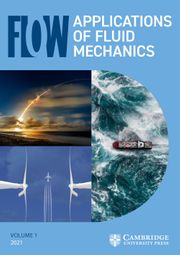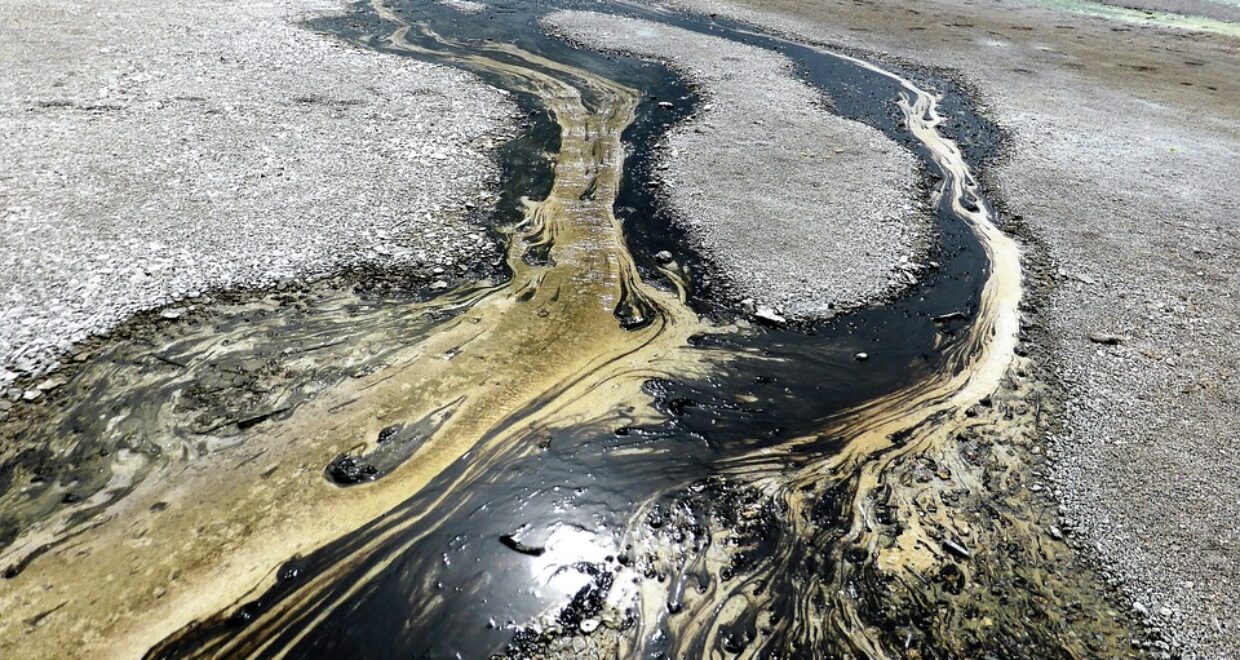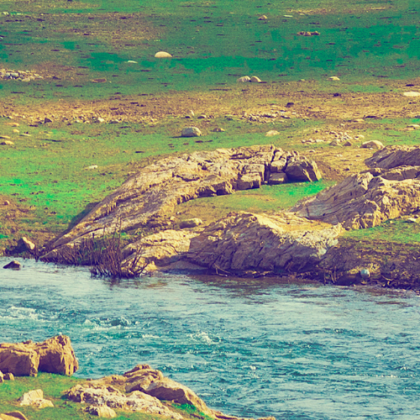Breaking Up and Getting Back Together in Particle-Laden Flows
A complicated dance occurs when sediment-loaded fluids flow. The swirling and swimming these lifeless particles do can at times look intelligent and choreographed, almost coming alive, despite being only the result of interactions between particles, mediated by their suspending fluid. The physics that experts use to describe this dance can be applied to biological systems like the shuttling of blood cells in the body, to the self-formation of levees on the slopes of mountains. But few systems exemplify the elegance of sediment-laden mixing and flow like the churn of a snowglobe.
Of course, beyond the mesmeric beauty of particle-fluid dynamics, these sorts of flows define a wide range of natural and engineered systems. But not all particle-fluid systems behave the same. In particular, the physical properties of the sediment material plays a large role in determining the steps of the dance. Small, light particles may be more susceptible to wild, turbulent mixing while large, heavy and dense particles may be more inclined to bump and roll like a drunken queue making its way along a fluid-defined path. But these two extremes only speak to cases where particles are inert lumps. Many systems add yet another layer of complexity in the form of interparticle attraction. Beyond the size and shape of particles, some exhibit attractive properties, allowing them to pull together into flocs – aggregated nuggets of material that can form and break apart as the surrounding fluid sends them tumbling (Table 1 describes the relationship between size and cohesion between different sizes of soil particle-suspended flows). Understanding this sort of particle-laden flow is the subject of a recent Tutorial paper published in FLOW by Vonwinckel, Zhao, Zhu, and Meiburg.

Most analyses of these systems tend to start with the Navier-Stokes equation, the skeleton key that determines the way fluids flow. This alone can be a difficult task, as the Navier-Stokes equation can become mathematically overwhelming very quickly, which is to say nothing of what happens when particles are added to the mix let alone ones that flocculate, or dynamically form and dissolute flocs within its flow. Figure 1 paints a picture of the complicated dynamics of flocculation within the flow of sediment-fluid system.

In the Tutorial Review by Vowinckel et al., readers can find a review the main physical concepts governing the growth and dissolution of flocs – namely, van der Waals forces. The authors then proceed to describe simulation-based techniques that are currently being used to study these kinds of systems. Simulations with particle-level resolution are are an intuitive tool that can be used to understand how flocs form and break up, as these techniques allow researchers to probe the physical processes happening directly to individual particles. With this framework, the growth and breakup of flocs can be studied in a range of different types of flows and boundary conditions, many of which are described by the authors. An important feature of these systems is how particles are stirred up from their sedimentary beds, along with how they return via sedimentation. For this, detailed descriptions of the system’s boundary conditions can be crucial.
Though the authors of this Tutorial Review outline a variety of techniques that can be used to study cohesive sediment-laden flow, they recognize that there is still a lot that is not known about how these systems work. Throughout the article they point to a variety of open questions related to methods of simulating these systems, but also identify several real scenarios that add even more complicated behaviour into the mix. For example, in muddy suspensions, living material can cause particles to develop films that impart even more physics to the problem of particulate flow. Flocs can also form in a wide variety of ways, from solid and relatively inert, to flexible, dynamic, or porous. For example, blood contains squishy, disc-like red blood cells that can stack into columns like flexible rods. These stacks behave differently from aggregates of silt or clay, and may require different techniques to fully capture their flow. Likewise, flocs that are porous can allow fluid to flow into them, adding more layers of complexity. Likely, these systems will require new, advanced, or hybrid approaches that are yet to be created to augment existing techniques.

Journal Name: Journal of Fluid Mechanics
Article Title: Investigating cohesive sediment dynamics in open waters via grain-resolved simulations
Authors: B. Vowinckel, K. Zhao, R. Zhu, and E. Meiburg






